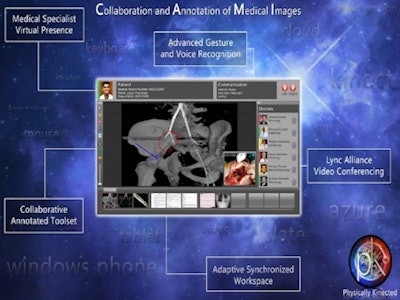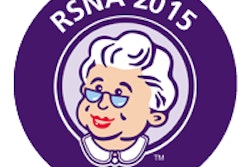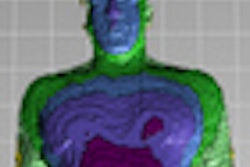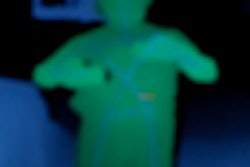
Researchers from Microsoft and the University of Arkansas have created a telemedicine system called Collaboration and Annotation of Medical Images (CAMI), which leverages Microsoft technology to offer a range of teleradiology and telementoring capabilities, according to an article in the International Journal of Electronic Finance.
Outfitted with Microsoft's Kinect motion-sensing system, Azure cloud platform access, and an Office 365 account, a single laptop outfitted with CAMI software can provide teleradiology capability, extending the reach of specialists and yielding significant cost savings, according to the researchers.
Although the system is still being developed, the Microsoft/Arkansas team believes CAMI could increase physician productivity all over the world.
"Saving lives is not a game filled with fun-packed action and the amazing graphics the Kinect is capable of, but thanks to the other extraordinary capabilities of the Kinect, coupled with its affordability and the functionality of CAMI, people all around the world, in the near future, will be able to enjoy having fun with their loved ones rather than mourn their loss," wrote a team led by Janet Bailey, PhD (IJEF, Vol. 7:1, pp. 33-47).
Based on physician feedback
After listening to the concerns of local medical personnel and individuals with family members living in small towns that are inadequately served by specialists, the researchers sought to determine if current technologies are meeting the needs of the medical community. If needs are not being met, they intended to discover what physicians and specialists want or need from a telementoring system, and to develop a prototype to address those needs.
In Arkansas, a telementoring program called AR Saves provides 39 hospitals in the state with access to specialists in the Little Rock area who assist them in diagnosing and treating stroke. The University of Arkansas for Medical Sciences (UAMS) also has a telementoring program in place for high-risk pregnancies and maternal health.
In the first phase of the study, the researchers conducted structured interviews with doctors, specialists, and members of AR Saves, as well as with first responders. They also researched telemedicine technologies currently in use, and they received information from participants on their telemedicine work with the Mayo Clinic. The researchers kept in contact with the interviewees at regular intervals in the second phase to provide ongoing review and enhancements to the system's design.
Unmet needs
From the interviews, the researchers found that the specialists wanted a number of capabilities, including the following:
- Simultaneous sharing, collaboration, and annotation of medical images
- The ability to control which medical data and images are shared
- Voice and video communication with the ability to capture still images from the live video stream
- The ability to have as many concurrent participants as necessary so that specialists from multiple disciplines can participate
In addition, the specialists wanted to be able to control the technology without breaking the sterile field or having to rely on someone else to put up medical images for viewing. They also wanted a secure collaborative environment, due to the nature of the data, and a system that was affordable and compact enough to place in the homes of on-call specialists and in hospitals and clinics across the state.
In response, the group developed CAMI, which provides all of these capabilities in one system, rather than the multiple disparate solutions that are currently required. This includes a medical image application, a communications solution that supports desktop sharing, and voice communication and video streaming.
To set up such a communication portal using all of these disparate components is costly in terms of both money and time.
"Furthermore, in critical situations, the patient does not have the luxury of waiting for a series of unrelated components to be brought up collectively," they wrote.
User interface
The main working area of CAMI's user interface contains all images, video streaming, and video-captured still images, and supports annotations. Toolbox, menu, and thumbnail areas can also be collapsed to gain more screen real estate, according to the researchers. The toolbox supports capabilities such as annotation, clear annotation, zoom, reset image, a grid overlay, image capture from live feed, and image scrolling.
 |
| CAMI provides a range of collaboration and annotation capabilities for remote image viewing. Image courtesy of the International Journal of Electronic Finance. Inderscience Publishers retains copyright of the article. |
While CAMI can work with the traditional mouse/keyboard for remote regions of the world that can't afford other input devices, it can also utilize touch input on tablets and other mobile devices, voice navigation, and Kinect for hands-free control. Kinect is particularly useful in environments such as operating rooms, and it also enables doctors to focus on the patient, according to the team.
The use of Kinect allows biometric login using facial recognition as a security measure. Voice control allows for complete system control in case a physician's hands are occupied.
"The ability for the surgeon to be able to control which image is displayed without having to direct a human assistant, to be able ask the system to call a specialist for an emergency consultation, and to audibly make annotations on an image or to capture still images from the video to enhance the communication with the remote specialist are all anticipated to be significantly lifesaving capabilities," the authors wrote.
Although it can be deployed as a standalone system, CAMI also supports collaboration with specialists. After a secure connection is created, Lync conferencing via Office 365 is used to create a video conference. Once a specialist accepts the "request" from CAMI, a Web services connection is completed to start the sharing of images. Both parties then have access to full synchronous sharing and control of image annotations, which are saved for future use.
Doctors and specialists can join the system after being prevetted and having accounts set up in SQL Azure.
Consistency for collaboration
CAMI employs a Web service running on Azure that updates each of the applications connected in near real-time to provide smooth manipulation and annotation of images. This maintains consistency between all connected parties, and there is no technical limit to the number of doctors that can be connected to the system, according to the team.
CAMI is also portable and easily taken into the field, as it runs on a Slate tablet computer that is connected to a webcam and Kinect. This makes it easy to be used by paramedics and first responders, according to the authors.
"When coupled with satellite communication, CAMI could be deployed by military medics operating in war-torn areas," they wrote.
The authors noted that development and testing of CAMI has not been completed and no patient data have been collected to date.
"The current technology and capabilities are just the tip of the iceberg," they wrote.




















